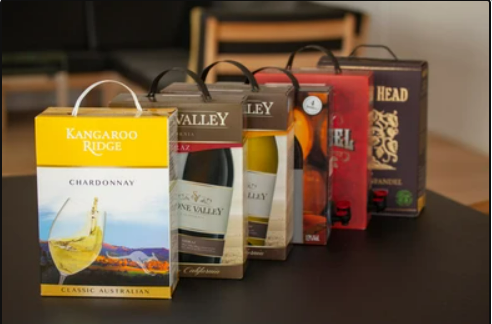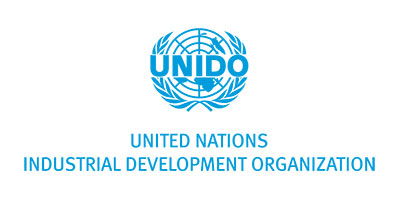- What Are the Mandatory Requirements?
- Packaging and Labelling
- What Additional Requirements Do Buyers Often Have?
- What Are the Requirements for Niche Markets?
- Which Quality Support Organizations in Lebanon Can Help Me?
What Are the Mandatory Requirements?
Denmark is a European Union (EU) Member State and applies EU food and agricultural import regulations, with few exceptions. Lebanese wine suppliers to Denmark should verify with local importers for the most current local requirements prior to shipping. Information on tariffs and taxes, rules of origin, product requirements, customs procedures, trade barriers specific to the product (e.g. product code 2204 for wine), country of origin (e.g. Lebanon) and export destination (e.g. Denmark) can be found on the European Commission’s Access2 Markets. All wines imported into Denmark should comply with European Oenological practices, and thus, need to be accompanied by a certificate and analysis report for wine presented in a single ‘VI1 document’ (example). An example of oenological practices is the maximum allowed sulphite additions which are required to preserve the quality of the wine. The EU legislative requirements state a threshold of 150 mg/L for red wine, 200 mg/L for white wine, 200 mg/L for sweet red wine and 250 mg/L for sweet white/rosé wine. Sulphite levels may be higher for certain wines from a specific region.1. Pesticide Residue
The European Union has set maximum residue levels (MRLs) for pesticides on food products. Products containing more pesticide residue than allowed will be withdrawn from the Danish market. The European Commission currently includes 647 pesticide residues with limits varying from one pesticide residue to the other and one product to the other. For substances that are not yet included in the European regulation, the default MRL of 0.01mg/Kg applies.
The most detected residues in wines include fenhexamid, iprovalicarb and boscalid. Conventionally grown wine grapes are one of the crops extensively treated with pesticides. Studies have found pesticide residues in more than 90% of wines examined. Hence, Danish importers request a detailed test for the presence of pesticide residues.
Note that buyers in several Member States, including Denmark, apply MRLs that are stricter than those established in the European Union legislation. The MRLs applied and their relative strictness very according to the buyer. Always consult your buyer to determine the specific adopted MRLs.

Tips
- Consult the EU pesticide database to identify relevant MRLs for your product (wine grapes). The database can be searched according to product or the pesticide used. A list of approved pesticides authorized for use by the European Union can be found on EUR-Lex.
- Check the latest official test report for wine grapes by EFSA.
- One good way to reduce the amount of pesticides involves the application of integrated pest management (IPM), an agricultural pest control strategy using complementary strategies, including growing practices and chemical management. Read more about IPM on the European Commission website
2. Contaminants Control
According to FAO, contaminants are substances that have not been intentionally added to food, but which may be present as a result of the various stages of its production, packaging, transport or holding. There are threshold limits set for several contaminants, in order the avoid negative impact on the quality of food and risks to human health. Therefore, it is crucial for the exporter to know of and comply with the maximum levels allowed by European legislation. The European Commission Regulation sets maximum levels of certain contaminants in food products. The EU frequently releases updates to the regulations set on 19 December 2006. The latest update on 14 October 2020 specifies the maximum levels below.
For wine, there is a risk of contamination of Ochratoxin A (OTA) by certain mold species and of lead mainly by brass tubes and faucets. The maximum allowed level for Ochratoxin A (a mycotoxin) is 2.0 μg/kg. For lead there is a threshold limit of 0.20 mg/kg.

Tips
- Read more about contaminants on the European Commission factsheet on food contaminants and check, at a regular basis, the maximum contaminant levels in the Annex of Regulation (EC) 1881/2006.
- To be prepared for potential new changes in the MRLs, read the Ongoing Reviews of MRLs in the European Union. Additionally, maintain good contact with your clients who can highlight changes in regulations affecting wine products.
- Find out more about the prevention and reduction of wine contaminants on FAO’s Codex Alimentarius website for international food standards.
3. Food Safety: Traceability, hygiene and control
Wine marketed in Denmark must meet the requirements of the European Union’s food safety schemes and food hygiene legislations. The starting point is that all food placed on the market must be safe. To guarantee food safety and to allow appropriate action in cases of unsafe food, food products must be traceable ‘from-farm-to-fork’, risks of contamination must be limited by defining the Hazard Analysis and Critical Control Points principles (HACCP) and food products are subjected to official controls.

Tips
- Keep an eye out on border rejections and alerts for wine on the European Rapid Alert System for Food Feed (RASFF) database under the product category ‘wine’. Browsing these lists can help you to learn about common problems faced by suppliers during border controls and to adopt appropriate measures to avoid them. Examples include: too high or undeclared content of sulphite and the addition of prohibited ingredients (such as monoethylene glycol (MEG).
Packaging and Labelling
All goods marketed in Denmark are subject to the European Union’s general legislation on packaging and liability.1.Packaging Requirements
Bottled and Boxed Wine
• Glass bottles and Bag-In-Box (BiB) are the most common types of packaging on the Danish consumer market. Currently, a considerable share of wine on the Danish market is packed as Bag-In-Box. BiB typically contain three liters. Lower handling fees per liter for boxed wines than for traditional glass-bottled wines and increased recyclability has added to the success of Bag-in-Box. The government’s efforts to promote sustainability have also contributed.
• Glass bottles are usually colored to reduce the effect of UV light and typically contain 0.75 liter. Besides glass bottles and BIBs, there are niche markets for wine in Tetra Pak packages, aluminum cans or plastic containers (PET).
• Corks (natural or synthetic, e.g. Nomacorc) and screw caps (e.g. Stelvin) are both common stoppers in the sustainable wine market. Plastic stoppers are very common as well, unlike glass stoppers (e.g. Vinolok) which are less common for wines. The selection of the type of stopper should depend on the requirements of the buyer.
• Bottles for sparkling wines need to be strong enough to withstand the pressure resulting from the high CO2 levels. Although there are no legally binding requirements, the International Technical Centre for Bottling and Related Packaging (CETIE) has published standards that are internationally recognized.
• Bulk Wine are rules for the use of certain bottle shapes which may only be used for certain types of wine.
Bulk Wine
Packaging-related quality problems with bulk wine hampered development of bulk wine trade for a long time. Recent improvements in storage technology, handling facilities, and quality protocols have contributed to better-quality preservation. These developments have caused an explosive growth in the trade of bulk wines, especially among the international brands.
Different types of packaging are available for the transport of bulk wine. The two most common are:
• Flexi-tanks – disposable plastic bags intended for installation in a standard 20-ft shipping container.
• ISO tanks – reusable steel tanks, which need to be cleaned between shipments. ISO tanks offer all the advantages of flexi-tanks, but are more polluting and expensive in transport due to higher weight. One advantage of an ISO tank is its reliability; they have a lower risk of defects compared to flexi-tanks.
Defective seals or the use of permeable material can lead to oxidation, which will degrade the wine. This can result in negative taste alterations and a shorter shelf life.
Food Contact Materials
Toxic substances can be found in the glass and decoration of wine bottles. Wine producers also sometimes opt for different packaging options. Specific health control provisions apply to consumer packaging materials that come into contact with food (e.g. bottles, containers). For example, food contact materials made from recycled or other plastic and ceramic must be manufactured in a manner that prevents them from transferring constituents to food in quantities that could endanger human health, change the composition of the food in an unacceptable way or cause deterioration in the flavor and odor of foodstuffs. Commonly restricted substances include vinyl chloride monomer N-nitrosamines, N-nitrosatable BADGE, NOGE, BFDGE and heavy metals.
Figure 1: Boxed Wine Packaging


Tips
- Although there are no legally binding requirements, the International Technical Centre for Bottling and Related Packaging (CETIE) has published standards that are internationally recognized, including bottling specifications for carbonated beverages (C02>2g).
- The European Union legislation on food contact materials is quite extensive. It is not easy to prove to your EU importer that your product complies with all requirements. For this reason, EU importers of food products require documentation on toxicology and risk assessment of chemical migration from food contact materials and/or declarations of compliance.
2. Labelling Requirements
There are strict rules on which information should be shown on the label and how this information has to be presented. The European Union has set compulsory labelling particulars for wine. Wine packaging labels should include the following information:
• The name of the Protected Denomination of Origin (PDO), Protected Geographical Indication (PGI), Wine of ‘producing country’, Produced in ‘producing country’, Product of ‘producing country’,
• Actual Alcoholic Strength (AAS),
• Nominal volume,
• Lot number,
• Sugar content (for sparkling wines),
• Importer details, and
• Allergenic ingredients.
Mandatory information must appear in the same field of vision on the container in such a way that all the information (except the lot number, importer’s details and allergens) is readable without having to turn the container. It must be clearly distinguishable from surrounding text or graphics.
Wine packaging labels may include the following additional information, which is left to the discretion of the manufacturer or the export destination country:
• Trademarks,
• Parties participating in the marketing process,
• Name of viticulture holding (château, quinta, finca, tenuta, Weingut, manor, estate, etc.)
• Varietal name (if the wine is produced from at least 75% of grapes of that varietal; two names mentioned if the wine comes entirely from those two varietals; more than two names accompanied by the percentage of composition),
• Vintage or harvest year,
• Type of wine (dry, medium dry, mellow or semi-sweet and sweet),
• The ageing of wine,
• Traditional terms of quality,
• Medals and distinctions,
• Other terms (such as history of wine or commercial firm, consumer advice, sensory condition, wine color, natural conditions or vine growing techniques, etc.)
Only information from the compulsory and optional labelling particulars are allowed on wine packages. With the exception of allergen information, which must appear in Danish or Swedish, the labeling requirements above may appear in one or more of the official languages of the EU. Furthermore, there are rules for the use of certain bottle shapes which may only be used for certain types of wine.
Allergens
Pre-packed products that contain allergens must be labelled in such a way that the presence of allergens is clearly visible to consumers. Under Regulation (EU) No 1169/2011, allergens must be highlighted in the list of ingredients. Requirements concerning allergen information also apply to foods that are not pre-packed, including those sold in restaurants and cafés.
The information on allergenic ingredients in wine products should Euinclude the following information:
• All wines containing over 10 milligrams of sulphite per liter must be labelled with the indication ‘Contains sulphites’. This information is crucial for individuals who are sensitive to sulphites and experience problems such as shortness of breath, coughing, and wheezing. To accommodate these consumers, wines with only a few mg or no sulphite could indicate that on the label.
• If egg and milk derivatives are used, it must also be mentioned on the label.
Figure 2: Different Natural Wine Labels

Figure 3: Regulations of Wine Labeling in the European Union


Tips
- Labelling and presentation regulations for wine are supplemented by the Commission Delegated Regulation (EU) 2019/33. Section 3 covers ‘Rules on certain specific bottle shapes and closure’.
- Legislation does not require the exact composition of a blend on the label. However, rising interest of consumers in the composition of wines increases the need to include such information on the label.
- If you target educated consumers, it is worth mentioning the grape variety and vintage. This can have a positive effect on consumer perception of your product’s quality.
- The use of the term ‘Reserve’ or even ‘Grand Reserve’ can help to convince consumers of the high quality of your wine. Ensure compliance with the wine law in your country concerning the use of such terms. Educated wine consumers, however, will be less receptive to this kind of marketing.
- The Food Standards Agency of the United Kingdom provides useful guidance on more detailed labelling requirements for the United Kingdom, which are also applicable to the Danish wine market.
- Some buyers may provide their own label designs. Consult with your buyer on this matter beforehand.
- Read more about transport and storage conditions of wine on the websites of Cargo Handbook. Packaging material and storage condition can impact the outcome of sensorial tests and phenol levels.
- Refer to Annex II of Regulation (EU) No 1169/2011 for an overview of all allergens.
What Additional Requirements Do Buyers Often Have?
In addition to the legally binding requirements, you also have to comply with the following non-legal requirements in order to be able to find a buyer.1. Food Safety Certification
Food hygiene (based on HACCP methodology) is a legislative requirement for producers and exporters of wine entering the Danish market.
Although food safety certification is not obligatory under European legislation, it has become a must for almost all Danish food importers. Most established Danish importers will not work with you if you cannot provide some type of comprehensive food safety certification. Compliance with such additional standards can allow wine exporters to enter specific market segments or gain competitive advantages relative to their competitors. Certifications concerning general quality and food safety management systems from recognized and trustworthy sources demonstrate the supplier’s commitment to high and consistent quality and safety. As a general rule, quality management requirements become stricter at higher levels of processing and packaging.
Many Danish buyers, especially large retailers and private label manufacturers, will ask for Global Food Safety Initiative (GFSI) recognized certification. For wine, the most popular certification programs recognized by GFSI are:
• International Featured Standards (IFS): This standard corresponds to ISO 9001, but with a focus on food safety, HACCP, hygiene, the manufacturing process and business surroundings. The IFS is a quality and safety standard published by the union of German supermarket chains, HDE (Hauptverband des Deutschen Einzelhandels).
• British Retail Consortium Global Standards (BRCGS): This private institution promotes private (BRC) standards, which contain rules on Good Manufacturing Practices (GMP) that extend beyond the HACCP plan (e.g. regarding organization and communication).
• ISO 22000: This standard combines the HACCP plan with prerequisite programs (PRPs). It specifies requirements for a food safety management system along the food chain, up to the point of final consumption.
• Food Safety System Certification (FSSC 22000): This standard is based on the existing international standards ISO 22000 and ISO/TS 22002-1.
• Safe Quality Food Certification (SQF): A comprehensive HACCP-based food safety and quality management system.
This list is not exhaustive and food certification systems are constantly developing.
Although the various food safety certification systems are based on similar principles, some buyers prefer one specific standard over the other. Food safety certification is only a basis to start exporting to Denmark. Serious buyers will usually visit or audit your production facilities before buying.

2. Corporate Social Responsibility
Danish buyers pay more and more attention to their corporate responsibilities regarding the social and environmental impact of their business. This is not just driven by governmental guidelines but also by the changing market. Millennials (people born between 1982–2000) are more concerned about the origin and the way a wine has been made than ever before. This also affects you as a supplier. Common requirements are the signing of a suppliers’ code of conduct in which you declare that you and your suppliers do business in a responsible way. Several larger retailers participate in initiatives such as the Ethical Trading Initiative (ETI) or the Business Social Compliance Initiative (BSCI). These initiatives focus on improving social conditions in their members’ supply chains. This implies that you, as a supplier, are also required to act in compliance with their principles.


Tips
- Be aware that most environmental and social malpractices take place in the vineyards (which may not be a part of your company). Think about a way to assure responsible business at the premises of your suppliers.
- Consider defining and implementing your own code of conduct. This is not required by buyers, but may be a good way to show potential buyers your views on corporate responsibility.
- Familiarize yourself with the ETI base code to check what ETI members require from their suppliers.
- Assess your company’s current performance by doing a self-assessment, which you can find on the BSCI website.
- Implement a quality and resource management system such as the ISO 14000
3. Other Requirements
The requirements of many Danish buyers concerning sulphites are stricter than EU legislative requirements. Buyers generally prefer low sulphite levels (e.g. < 100 mg/l for white wine). However, sulphite is a preservative and lower sulphite levels may lead to off-tastes and reduced shelf life.
Use of fertilizers can improve soil quality. However, wineries should minimize the use of chemical fertilizers, as Danish consumers are concerned about effects of agriculture on the environment and the use of chemicals in particular.
Particularly big buyers in Denmark indicate that producers of wine can improve their chances of successful market entry by showing professionalism. Communication and sampling are areas in which producers in developing countries in particular can improve.

Tips
- Reduce the need to add sulphites and only add the minimum quantity of sulphites required to preserve the quality of your wine.
- Promote the use of Integrated Pest Management (IPM) or equivalent production systems aimed at minimizing the use of chemicals by your producers.
- When you approach a potential buyer for the first time, provide a complete introduction of your company and products. Include a unique and passionate story about your company and your wines.
- Only send clean and representative samples with clear labels that include the price and volume available in addition to contact details.
What Are the Requirements for Niche Markets?
In addition to the requirements you have to comply with to be allowed on the Danish market or to find a buyer, complying with the following additional requirements could offer you a competitive advantage and make finding a buyer easier.1. Organic Wine
Wine can be certified as organic when its grapes are grown in accordance with organic farming principles. This implies the use of grapes that are cultivated without the use of any artificial chemical fungicides, pesticides, herbicides or fertilizers. Organic viticulture (the production of organic wine) includes protection of the natural balance of the vineyard and its surrounding environment during the production process.
At the winemaking level, organic techniques are used. This means little to no manipulation of wines by reverse osmosis and excessive filtration and no use of flavor additives. Wine can only carry the organic label when it meets the criteria set by certification agencies. Such criteria differ across agencies and countries worldwide. In order to be accepted by Denmark as an organic product, a certification that complies with EU standards concerning organic wine is needed and the grapes and the wine production facilities must be audited by an accredited certifier. Only then may the producer put the European organic logo on their products, as well as the logo of the standard holder.
Biodynamic Wine
Biodynamic wine production shares many principles with organic wine production. In biodynamic viticulture, the farm is seen as a cohesive interconnected living system. It excludes chemicals from the production system, but also uses some spiritual practices. Biodynamic producers believe that these spiritual practices help to improve the vineyard’s health. Producers can get certified against standards for biodynamic wine production as laid down by Demeter International.
Natural Wine
A legal definition of natural wine does not exist. Generally, natural wine producers believe that minimal chemical and technological intervention during wine production is better for the vineyard and wines. They take organic or biodynamic wine production one step further by applying even stricter rules for the use of additives and the removal of anything from the wine. Natural wines improve by ageing due to the high tannins in the wine.


2. Fairtrade Certification
Fair trade wine typically refers to wine that has been certified by Fairtrade International or Fair for Life. The ‘fair trade’ concept promotes fair pricing and improved social conditions for producers and their communities. Wine producers can have their products labelled as Fairtrade by going through a certification process that ensures compliance with specific economic, social, and environmental standards. Fairtrade-certified products will not be sold at a premium price. Wines still need to be very competitive on price points, but it allows exporters from developing countries to be active in their own niche segment


Tips
- Processed wine from organic grapes must be produced in accordance with Regulation (EC) No 834/2007 and Regulation (EC) No 889/ 2008.
- The term ‘organic’ and all its derivatives or diminutives such as ‘bio’ and ‘eco’ may only be used to label products that comply with EU organic production.
- Sorbic acid and desulfurication are not allowed and the level of sulfites must be at least 30-50 mg per liter lower than their conventional equivalent. For more information see the European Commission’s website.
- Organic products imported from third countries may carry the EU organic logo if they comply with the EU production rules. When the EU organic logo appears on the label, the indication of the place of farming is required.
- Implementing organic production and becoming certified can be expensive. In the current market the return on investment may not be high. Therefore, first check with your buyer if he requires organic certification.
- Have a closer look at organic wine in the CBI product factsheet on sustainable wine in Europe.
- Fairtrade certification is relatively expensive, but could give you access to supermarkets. Before obtaining certification, make a proper market analysis to see if (potential) buyers would require certification.
- Fairtrade provides separate standards for small wine grape producer organizations and wine grape plantations.
Which Quality Support Organizations in Lebanon Can Help Me?
The Lebanese Agricultural Research Institute (LARI) is a governmental organization under the Minister of Agriculture’s supervision. The institute conducts applied and basic scientific research for the development and advancement of the agricultural sector in Lebanon. Extension services for farmers include management of soil fertility, water consumptive use, plant pest, and disease control, crop rotation, and animal disease treatment and prevention, among others.
The Lebanese Standards Institution (LIBNOR) is a public institution attached to the Ministry of Industry. It was established on July 23, 1962 by a law giving it solely the right to prepare, publish, and amend national standards, as well as to grant the Lebanese Conformity Mark NL. Lebanese standards are prepared by technical committees formed by LIBNOR, which include setting the dimensions, conventions, symbols, and the definition of products’ quality, as well as the methods of testing and analysis. They also include the codes of practice for professional and structural work.
The Industrial Research Institute (IRI) is registered as a Lebanese nonprofit institution. It provides, on an international scientific level, reliable services in testing and analysis and grants certificates of quality or conformity with standards and purchase specifications. It also provides specialized technological, management, and economic consulting services to existing industries and industrial development schemes.
The Chamber of Commerce, Industry, and Agriculture of Beirut and Mount Lebanon (CCIA-BML) is a non-profit private organization operating under Decree-Law 36/67. The Lebanese Chambers are the sole providers of consular services, including certification of origin and authentication of commercial documents. Also, the chambers conduct training, develop partnerships, and organize matchmaking events and exhibitions, among other services. The CCIA-BML operates the Lebanese Training Center, which provides managerial and technical training for Lebanese enterprises. In addition, the Chamber of Commerce, Industry, and Agriculture of Tripoli and North Lebanon provides quality control center laboratories, among other services.
The Lebanese Standards Institution (LIBNOR) is a public institution attached to the Ministry of Industry. It was established on July 23, 1962 by a law giving it solely the right to prepare, publish, and amend national standards, as well as to grant the Lebanese Conformity Mark NL. Lebanese standards are prepared by technical committees formed by LIBNOR, which include setting the dimensions, conventions, symbols, and the definition of products’ quality, as well as the methods of testing and analysis. They also include the codes of practice for professional and structural work.
The Industrial Research Institute (IRI) is registered as a Lebanese nonprofit institution. It provides, on an international scientific level, reliable services in testing and analysis and grants certificates of quality or conformity with standards and purchase specifications. It also provides specialized technological, management, and economic consulting services to existing industries and industrial development schemes.
The Chamber of Commerce, Industry, and Agriculture of Beirut and Mount Lebanon (CCIA-BML) is a non-profit private organization operating under Decree-Law 36/67. The Lebanese Chambers are the sole providers of consular services, including certification of origin and authentication of commercial documents. Also, the chambers conduct training, develop partnerships, and organize matchmaking events and exhibitions, among other services. The CCIA-BML operates the Lebanese Training Center, which provides managerial and technical training for Lebanese enterprises. In addition, the Chamber of Commerce, Industry, and Agriculture of Tripoli and North Lebanon provides quality control center laboratories, among other services.




